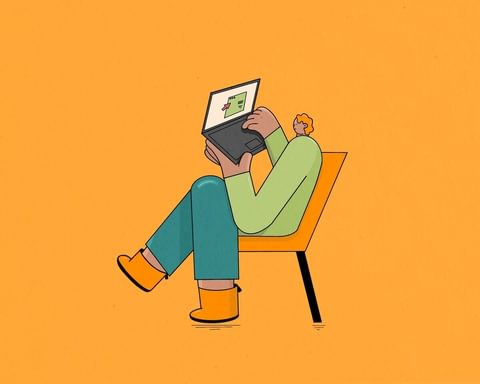NEWS ALERT - We won a SILVER IPM award for Best use of Social Media, 2025! Read more🏆

In the world of web design and development, creating a website is not just about aesthetics and functionality. While they are of course clearly important, understanding the principles of behavioural psychology can make a big difference in the success of your website. In this article, I explore why behavioural psychology is so important, and how you can use it to your advantage.
Behavioural psychology is a field of psychology that focuses on understanding human behaviour and the factors that influence it. It looks at the ways in which people learn, make decisions, and respond to different stimuli. By understanding these factors, behavioural psychologists can develop strategies to influence behaviour and achieve desired outcomes.
When it comes to website design, behavioural psychology plays an important role in determining how users interact with your website. By understanding what influences user behaviour, you can create a website that is optimised for engagement and ultimately conversion.
User experience (UX) is a key factor in determining the success of a website. If users have a positive experience on your website, they are more likely to return and engage with your content. However, if users have a negative experience, they are likely to leave and may never return.
Behavioural psychology can help you understand how users interact with your website and what factors contribute to a positive user experience. For example, research has shown that users prefer websites that are easy to navigate, have clear calls to action, and load quickly. By incorporating these factors into your website design, you can create a positive user experience that encourages engagement and conversion.
Colour psychology is the study of how colours can affect human behaviour and emotions. Different colours can evoke different emotions and feelings in people, and understanding this can help you create a website that is visually appealing and engaging.
For example, research has shown that the colour blue is associated with trust and reliability, while the colour red is associated with excitement and urgency. By using these colours strategically on your website, you can create a visual hierarchy that guides users towards important elements, such as calls to action.
Social proof is a psychological phenomenon where people are influenced by the actions of others. For example, if you see that many other people have purchased a product or service, you are more likely to believe that it is a good choice.
In the context of website design, social proof can be used to encourage user engagement and conversion. For example, including customer testimonials, social media followers, or ratings and reviews can provide social proof that your website is a trusted source of information or products.
Cognitive biases are errors in thinking that can affect decision-making. For example, the scarcity bias is the tendency to place a higher value on things that are rare or in limited supply. By using scarcity tactics, such as limited-time offers or low stock alerts, you can create a sense of urgency that encourages users to take action.
Personalisation is another effective way to create a more engaging and personalized experience for users. By using behavioural data such as past purchases, browsing history, and location, website designers can create personalized recommendations and experiences that are tailored to each user's preferences and needs.
For instance, by displaying products or services that are similar to those the user has previously purchased or searched for, website designers can create a more personalized experience that is more likely to resonate with the user.
In conclusion, behavioural psychology plays a crucial role in creating a website that is engaging and effective in achieving its goals. By understanding the cognitive and behavioural processes of users, website designers can create interfaces that are intuitive, user-friendly, and visually appealing. By incorporating principles such as the COM-B Model, something that we at Together use widely, designers can optimise the user experience and make it easier for users to navigate the website and achieve their desired outcomes.
Furthermore, behavioural psychology can also help website designers to understand the motivations and decision-making processes of users, allowing them to design content and messaging that resonates with the target audience. By using principles of social proof, reciprocity, and scarcity, designers can create persuasive content that encourages users to take action, such as making a purchase or signing up for a newsletter.
Overall, the incorporation of behavioural psychology principles into website design can significantly improve the user experience and increase the effectiveness of the website in achieving its goals. As such, it is essential for website designers to have a strong understanding of behavioural psychology and to apply these principles in the creation of effective and engaging websites.
Want to see more? Read more about our digital process and projects here.